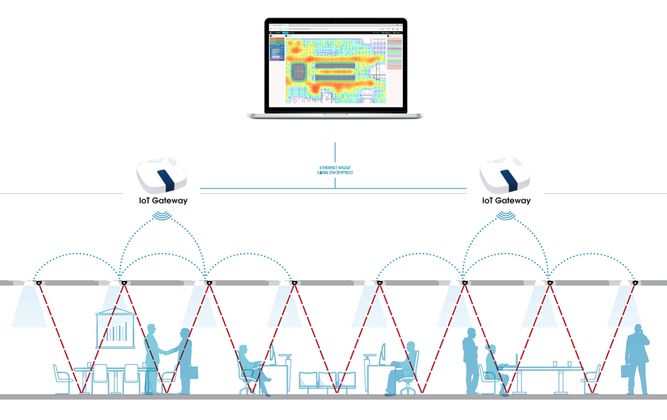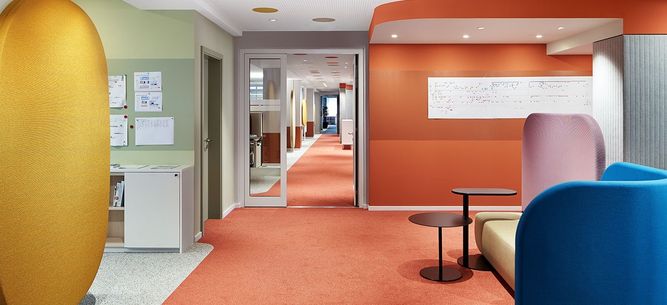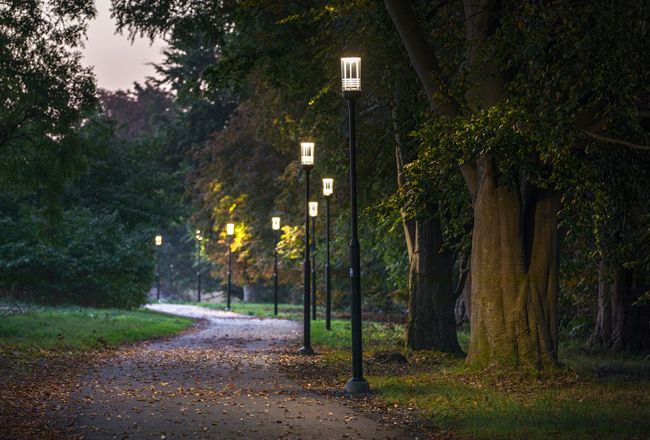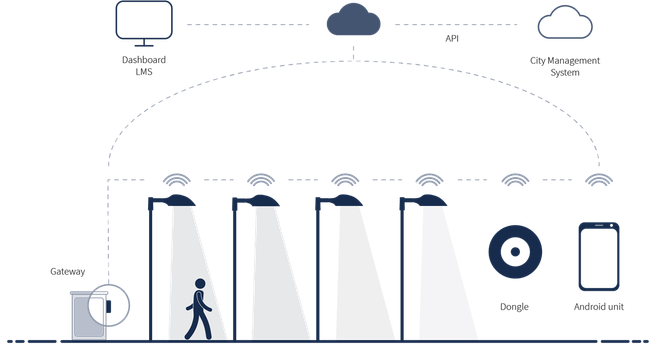Our Platforms
We have two smart lighting solutions within the Group. Organic Response for indoor environments such as schools, offices and hospitals, and Citygrid for outdoor lighting. The foundation for both of these solutions is to adapt lighting based on presence, which enables significant energy savings in all environments.
Indoor: Organic Response
An open intelligent solution
Organic Response is our intelligent lighting control system that achieves unprecedented energy savings at a fraction of the installation cost of traditional systems. At the heart of the system is the Sensor Node, which is integrated into each luminaire.
Based on Distributed Intelligence, it allows each individual luminaire to make lighting decisions based on the presence of occupants in its immediate vicinity, ambient light levels, and information it receives from its neighboring luminaires.
The system is plug-and-play and works offline out of the box, without commissioning. Adding a gateway enables more lighting control functionality and analytics tools. The Organic Response solution includes an online portal, but there is also an open API interface for customers to choose their own software and integrations.

Fighting complexity since 2011
Organic Response originates from a start-up formed in Melbourne 2011. It was founded to address complexities in available lighting control systems. This had become a barrier to the functionality they intended to provide.
Users were left confused with respect to the control functionality and installations required configuration by highly skilled professionals for even base-level operation. This resulted in the configuration often becoming inappropriate over time, resulting in lights burning long into the night.
Organic Response is a lighting control system designed to respond to human presence and ambient light with elegance and unparalleled simplicity – delivering excellent energy savings and occupancy comfort without a complex configuration.
Since 2017, Organic Response has been part of Fagerhult Group, supplying control systems to our Group brands.

The importance of balanced indoor light quantity
An important aspect of indoor quality is the balance between how the light quantity is distributed in a room along the walls, ceiling and floor to create a calm work environment and allow the eyes to rest. We often work with hanging solutions that include an upwardfacing luminaire that lights the ceiling to create a softer transition in the room. It is important to have the right design to minimise glare at eye level and within work spaces. Various colour temperatures can create warm light that has a soothing effect and helps people relax, or cooler light that energises and activates us.
Lighting can also be customised to follow our biological daily rhythm, which supports our well-being. An office environment or lecture hall with correctly adapted lighting can help us both to feel better and to perform at a higher level. Occupational groups, for example healthcare workers, need flexible work light depending on the tasks that need to be carried out.

Outdoor: Citygrid

Applying the principles of lighting where and when you need it can be a challenge in exterior applications such as pedestrian walkways and streets. With sporadic night-time occupancy they rarely need to be fully lit but leaving them in complete darkness can jeopardise the sense of security. Citygrid is an innovative wireless lighting control system that balances the need to minimise energy usage with the needs of the people within the space.
The technology behind Citygrid has been available in the market since its launch in 2014 in Aarhus, Denmark. The founding principle was to save energy by control outdoor lighting for streets and roads, which are often fully illuminated even during the night.
Citygrid equips each luminaire with a connectivity module consisting of a sensor and communication equipment. When someone is detected on a pedestrian path, signals are sent to lampposts in front of and behind the person, which are dimmed up to full strength as the person walks along the path. If no one is in the area, lampposts are dimmed to lower levels.


Safety in focus for outdoor lighting
Outdoor lighting quality is often about creating a sense of security and increasing safety. Unnecessary traffic accidents caused by inadequate or incorrect lighting can be avoided by maintaining a high level of light quality. On footpaths and in parks, we work with light as a factor in creating well-being. The path itself, as well as the area around it, are illuminated to increase a sense of security.
In outdoor environments, it is also important to take the animal and human need for a natural circadian rhythm into consideration. By controlling outdoor lighting with sensors and control systems that adjust the light’s strength and colour temperature depending on motion, energy consumption is reduced and unnecessary light pollution is minimised.